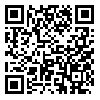Volume 5, Issue 1 (5-2017)
Jorjani Biomed J 2017, 5(1): 65-53 |
Back to browse issues page
Download citation:
BibTeX | RIS | EndNote | Medlars | ProCite | Reference Manager | RefWorks
Send citation to:



BibTeX | RIS | EndNote | Medlars | ProCite | Reference Manager | RefWorks
Send citation to:
Karami J, Yazdanbakhsh K, Karimi P. Investigating the mediating role of attachment styles in explaining the relationship between temperament, character dimensions and somatization disorders among female teachers in Kermanshah. Jorjani Biomed J 2017; 5 (1) :65-53
URL: http://goums.ac.ir/jorjanijournal/article-1-532-en.html
URL: http://goums.ac.ir/jorjanijournal/article-1-532-en.html
1- Department of Psychology, Razi University, Kermanshah, Iran.
2- Department of Psychology, Razi University , Kermanshah, Iran.
3- 3. M.Sc. in Psychology, Razi University of Kermanshah, Health Promotion Research Center, Kermanshah, Iran.
2- Department of Psychology, Razi University , Kermanshah, Iran.
3- 3. M.Sc. in Psychology, Razi University of Kermanshah, Health Promotion Research Center, Kermanshah, Iran.
Abstract: (7865 Views)
Background & Objective: According to the importance of somatization disorder in women, this study was conducted to investigate the mediating role of attachment styles in relationship with temperament and character dimensions of personality and somatization disorder among female teachers in Kermanshah city.
Methods: The study population consisted of all female teachers working in Kermanshah educational system in 2013-2014. The sample population included 300 teachers who were allocated by multistep cluster sampling. They were asked to complete Cloninger Temperament and character Inventor Questionnaire (TCI), somatization questionnaire and Adult Attachment Styles Inventory Questionnaire (AII). The data analysis was done by correlation coefficient calculation and path analysis using SPSS 21.0 and Amos 18.0 software.
Results: Our findings showed that there was a significant correlation between anxiety and avoidance attachment styles and dimensions of personality with somatoform disorder. However, the relationship between safe attachment style and physical disorder was not significant.
Conclusion: Temperament and character dimensions of personality result in somatization disorder when the insecure internal models which are set according to the framework of mother-neonate attachment relationships had been formed.
Methods: The study population consisted of all female teachers working in Kermanshah educational system in 2013-2014. The sample population included 300 teachers who were allocated by multistep cluster sampling. They were asked to complete Cloninger Temperament and character Inventor Questionnaire (TCI), somatization questionnaire and Adult Attachment Styles Inventory Questionnaire (AII). The data analysis was done by correlation coefficient calculation and path analysis using SPSS 21.0 and Amos 18.0 software.
Results: Our findings showed that there was a significant correlation between anxiety and avoidance attachment styles and dimensions of personality with somatoform disorder. However, the relationship between safe attachment style and physical disorder was not significant.
Conclusion: Temperament and character dimensions of personality result in somatization disorder when the insecure internal models which are set according to the framework of mother-neonate attachment relationships had been formed.
Type of Article: Original article |
Subject:
General medicine
Received: 2017/09/27 | Accepted: 2017/09/27 | Published: 2017/09/27
Received: 2017/09/27 | Accepted: 2017/09/27 | Published: 2017/09/27
| Rights and permissions | |
 |
This work is licensed under a Creative Commons Attribution-NonCommercial 4.0 International License. |




